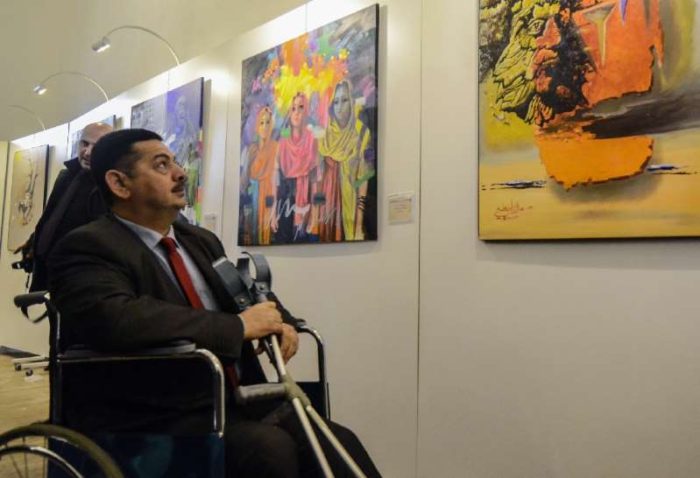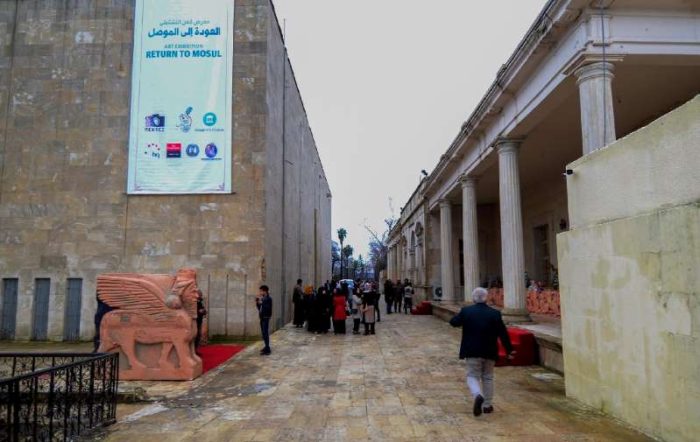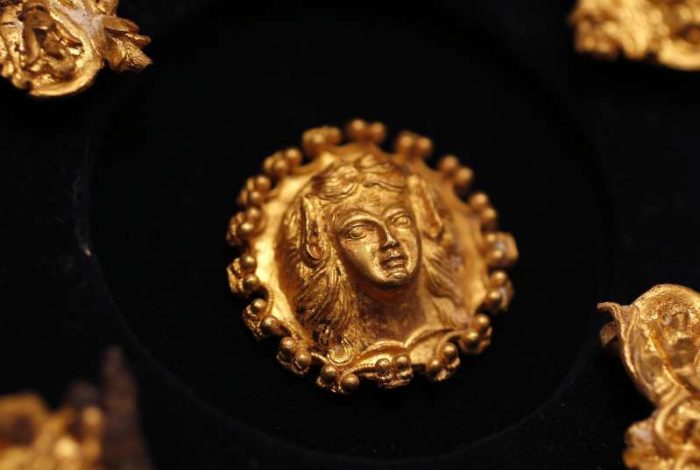
© Provided by AFP The “Return to Mosul” exhibit sees the city’s museum open for the first time since the Islamic State group were ousted
Mosul’s celebrated museum has not recovered since Islamic State group jihadists ravaged its ancient treasures several years ago, but part of the complex reopened Tuesday to showcase more contemporary art.
For the first time since IS overran the Iraqi city in 2014, visitors on Tuesday could wander the grandiose royal reception hall, which forms part of the museum.
The building is considered the oldest government complex in Mosul and was recently renovated to host the 29-artist exhibit, titled “Return to Mosul,” a member of the organising Al-Ghad Radio station told AFP.
The northern Iraqi city served as IS’s brutal seat of power for three years, before Iraqi troops recaptured it in 2017.
Much of Mosul’s east has made a modest recovery, but the west — home to the Old City and the museum — remains in ruins.
The exhibit was “proof that war didn’t kill Mosul and that, on the contrary, it’s living a full-on renaissance,” said Huda Hani, a 25-year-old visitor on Tuesday.
Buttoned up in warm jackets, families walked through the hall to look at the paintings and sculptures, many of which feature themes of home, return, or conflict.
The rest of the museum, however, remains closed for security reasons, said its director Zeid Saadallah.
“You have to protect what is left,” he told AFP.
The world’s most extravagant treasures ever found [StarsInsider]
During its bloody reign over Mosul, IS released a video of its jihadists attacking the museum with sledgehammers and pneumatic drills, destroying priceless pre-Islamic artefacts that it considered insulting to religion.
The damaged pieces including two imposing “lamassu” statues, Assyrian winged bulls with human faces.

© Provided by AFP Despite the new exhibition, much of Mosul museum remains closed for security reasons
IS also blew up the Assyrian city of Nimrud, the ancient city of Hatra, and the centuries-old desert city of Palmyra in neighbouring Syria.
But in addition to destroying artefacts, the jihadist group trafficked valuable pieces to finance its activities.
In partnership with Google, 3-D printer BQ, and other organisations, Mosul’s artists and technicians are looking to print three-dimensional versions of the smashed pieces.
And ALIPH, a heritage-focused project led by France the UAE, has dedicated $480,000 to help in the first phase of the museum’s reconstruction.
Read original article here.
